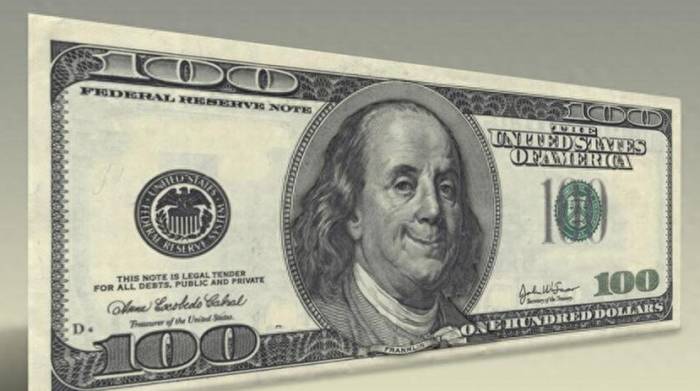$780B: China Rarely Buys More, US Debt's Top Seller Emerges, Dumps $1.3T
At the end of July, the U.S. national debt first broke through the 35 trillion US dollar mark.
However, less than 20 days later, the U.S. national debt reached 35.17 trillion US dollars, with an additional 178 billion US dollars in debt, equivalent to an increase of 9.368 billion US dollars in debt per day.
The U.S. debt is still expanding at a crazy speed, accelerating towards 36 trillion US dollars.
As the second-largest overseas holder of U.S. debt, our country has been selling U.S. debt over the years, reducing from the peak of 1.3 trillion US dollars to the current 780.2 billion US dollars, with a reduction of more than 500 billion US dollars.
However, according to the data released by the U.S. Department of the Treasury in mid-August, after continuously reducing the U.S. debt, our country suddenly increased by 11.9 billion US dollars, and the holding scale reached 780.2 billion US dollars.
Due to the 2-month time delay of this data, the data released in mid-August is the data of June, and the data of July can only be announced in September.
According to the data of the U.S. Department of the Treasury, the central banks of foreign countries increased their holdings by a total of 78.3 billion US dollars in June, with a total holding of 8.21 trillion US dollars, accounting for 23% of the total U.S. debt.
Advertisement
Among them, our country is exactly the opposite of Japan, our country rarely increased the holding of 10 billion US dollars in debt, while Japan sold 10.6 billion US dollars, and the holding was reduced to 111 billion US dollars.
Japan's sale of U.S. debt is likely to be the intervention of the Bank of Japan.
After using foreign exchange funds, it also sold a part of the U.S. debt held, mainly to cope with the continuous depreciation of the yen exchange rate.
Since Japan's sale of U.S. debt is to stabilize the yen exchange rate, what is the meaning of our country's increase in U.S. debt?
In fact, the sale and reduction of U.S. debt are somewhat similar to stocks, and the buying and selling of U.S. debt will also change with the fluctuation of U.S. debt prices.
In June this year, our country actually bought nearly 6 billion US dollars in long-term U.S. debt, and a small amount of short-term U.S. debt, with a total of no more than 6.5 billion US dollars.
However, due to the decline in U.S. debt yields at that time, the price of U.S. debt soared, and the increased U.S. debt finally led to "market value inflation".
This year, our country has reduced its holdings of U.S. debt for three consecutive months, slightly increased in April, and continued to reduce in May.
In June, it increased again.
In the first five months of this year, our country sold a total of 48 billion U.S. dollars in debt.
Even if the increase in June is calculated, the overall holding of U.S. debt is still decreasing.
In addition to our country, the United Kingdom also increased by 18.1 billion US dollars in June, France increased by 24.2 billion US dollars, and Canada, Belgium and other countries also increased their holdings, while Japan, Switzerland, Ireland, Luxembourg and other countries reduced their holdings of U.S. debt.
Although Japan has sold U.S. debt for three consecutive months, the scale of the sale is only 70 billion US dollars.
However, the real largest seller of U.S. debt has emerged, which is the Federal Reserve, with a total of 140 billion US dollars, which is not comparable to the scale of a single country selling.
As early as mid-2022, the Federal Reserve still held 5.77 trillion US dollars in U.S. Treasury bonds, but by June this year, the U.S. Treasury bonds held by the Federal Reserve had fallen to 4.46 trillion US dollars, with a reduction of 131 billion US dollars.

In two years, the sale of 1.3 trillion U.S. dollars in debt is such a volume and scale that no country can surpass it.
Even if China and Japan sell the U.S. debt for nearly two years, it is not so much.
Why does the Federal Reserve sell U.S. debt?
In fact, the reason is not complicated.
The Federal Reserve sells U.S. debt in its hands to exchange for U.S. dollars in the market, that is, to withdraw liquidity, to cooperate with interest rate hikes, and to curb the growth of inflation.
This is also what the Federal Reserve has been doing in the past two years - crazy interest rate hikes.
However, the global trend is changing, and the Federal Reserve may have to cut interest rates in the future.
Now the market bets that the Federal Reserve will definitely cut interest rates in September, but whether to cut interest rates by 20 basis points or 50 basis points is still controversial.
It is necessary to know that the U.S. Bureau of Labor announced that the non-agricultural employment data from March last year to March this year was reduced by 810,000 people, and data fraud is very serious.
This also shows that the U.S. labor market is weaker than imagined, and it is also to provide data support for the Federal Reserve's next interest rate cut.
Now, many countries such as the European Union, the United Kingdom, and Canada have cut interest rates in advance.
Once the United States starts to cut interest rates, the global economy will truly start to turn, and a new cycle of interest rate cuts will be opened.
The global capital market, financial market, and industrial capital will also usher in new changes.
Leave A Comment